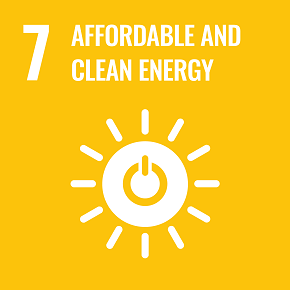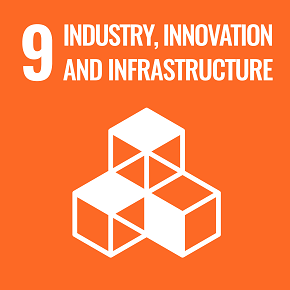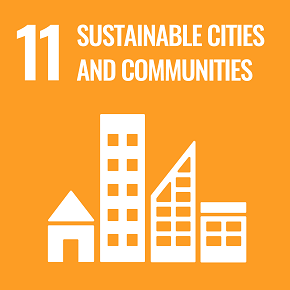Aiming to Realize a Carbon-free SocietyEnvironment
Sagawa Express is helping to realize a carbon-free society by actively working on a range of initiatives to reduce CO2 emissions and streamline business activities. These include modal shift promotion and reduction of fuel consumption through safe and eco-friendly driving. They also include the adoption of environmentally friendly vehicles such as compressed natural gas (CNG) trucks, hybrid trucks, and electric vehicles.
Related SDGs
Decarbonization and us
-Why we need to act-
Decarbonization and us
-How we should act-
Environmentally Friendly Transportation
Adoption of environmentally friendly vehicles
After early adoption in the 1990s ahead of competitors, the number of our environmentally friendly vehicles has more than doubled in the last eight years
Compared to conventional gasoline and diesel vehicles, environmentally friendly vehicles have a smaller impact on the global environment. They emit lower levels of greenhouse gases such as carbon dioxide which promote global warming, as well as air pollutants contained in exhaust gas (nitrogen oxides and particulate matter, etc.). As of the end of fiscal 2022, Sagawa Express owns 16,802 environmentally friendly vehicles, and environmentally friendly vehicle share of its fleet is increasing year by year.

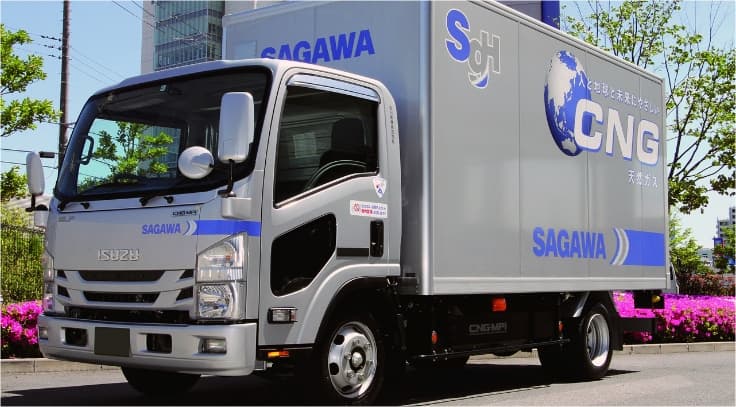

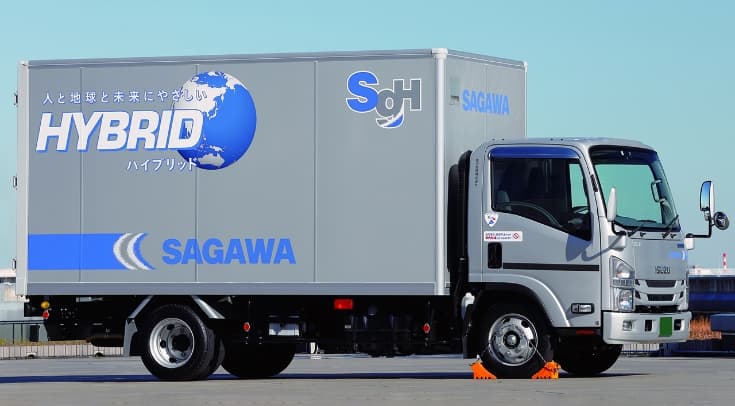
Establishing Service Centers
Our 325 Service Centers eliminate the need for 1,500 trucks
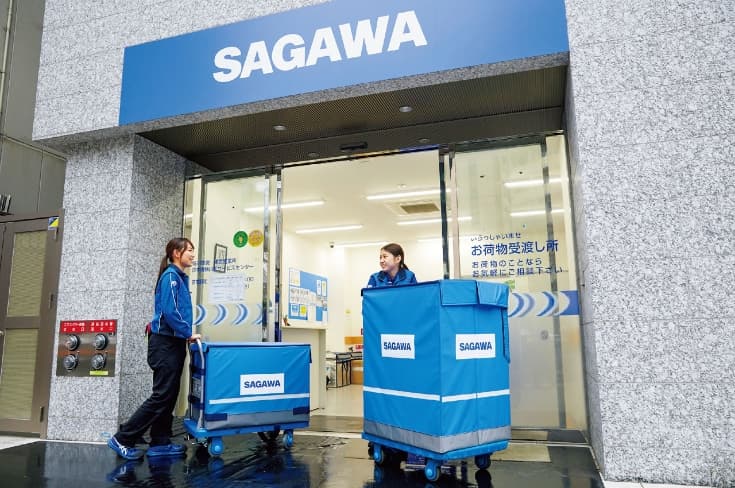
Sagawa Express is also actively working to provide environmentally friendly pickup and delivery without the use of trucks. By using hand carts and bicycles at Service Centers for package pickup and delivery, we are reducing the use of trucks, which significantly reduces CO2 emissions.
TRIKE CARGO: Power-assist electric tricycles for pickup and delivery
We introduced TRIKE CARGO, a power-assisted electric tricycle for business use, in August 2020. It can carry up to 150 kg* (one third of the loading capacity of a light truck), four times the conventional trike capacity.※In the case of Tokyo (depending on the ordinance of each prefecture)
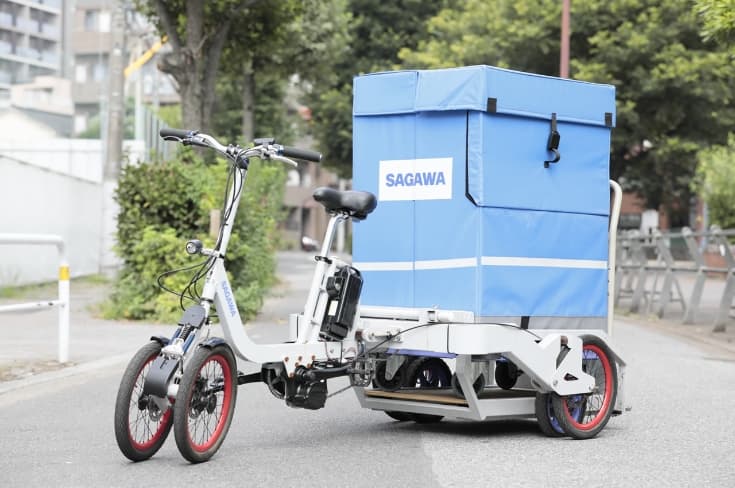
Modal Shift Promotion
Shifting from truck to rail or sea transport to reduce CO2 emissions by about 1/10
Modal shifting means switching long-distance freight transport from truck to high-capacity rail or sea transport in order to lower CO2 emissions. Sagawa Express is actively promoting a modal shift to reduce its CO2 emissions.
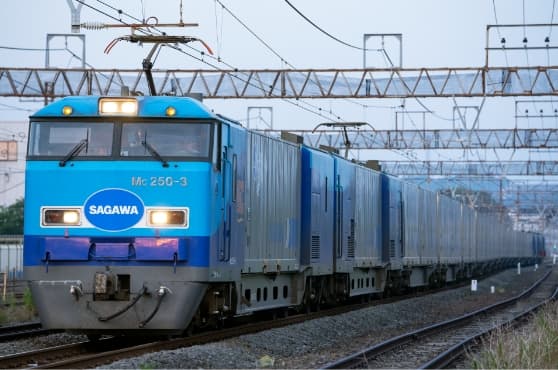
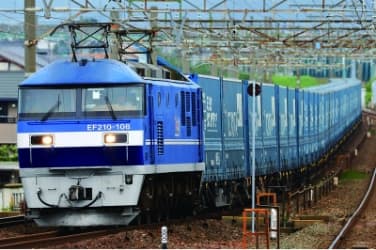
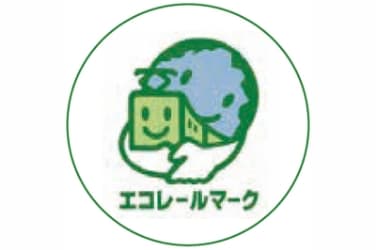
CO2 emissions reduction from modal shifting

Compared to truck transport, the amount of CO2 emitted to transport a ton of cargo for one kilometer is about 1/10th for rail and 1/5th for ocean transport.
Mixing freight and passengers transport business - Advanced form of modal shift
Passenger trains and taxis in service are now also being used to carry cargo. In addition to reducing CO2 emissions, this type of modal shift provides the added advantages of maintaining employment and streamlining logistics in depopulated rural areas. In cooperation with regional transportation companies such as rail, bus, and share-ride taxis operators, Sagawa Express is working to utilize various passenger services for cargo transport.
Mixing Freight and Passengers Transport Business
| Mode | Company | Start | Area |
|---|---|---|---|
| Railroad | Hokuetsu Express | April 2017 | Muikamachi(Muikamachi Sta.)~Zyouetsu(Uragawara Sta.) in Niigata |
| Bus | Iyo Railway Uwajima Bus Co.,Ltd The Setouchi Bus CO.,LTD. |
September 2017 | Matsuyama、Yawatahama、Uwazima、Imabari in Ehime |
| Taxi | Asahikawa Chuo Traffic Co.,Ltd | November 2017 | Asahikawa in Hokkaido |
| Taxi | MK Taxi JAL ABC, Inc. |
June 2018 | Osaka~Kyoto |
| Taxi | Yamashiro Yasaka Koutsu Co.,Ltd | October 2018 | Kasagi in Kyoto |
| Railroad Taxi |
Hokkaido Railway Company Tesio Hire |
December 2018 | Railway:Wakkanai(Wakkanai Sta.)~Horonobe(Horonobe Sta.) in Hokkaido Taxi:Horonobe in Hokkaido |
| Taxi | Hey Taxi | November 2018 | Toma in Hokkaido |
| Railroad | Matsuura Railway | November 2019 | Matsuura(Matsuura Sta.)~Sasebo(Senryugataki Sta.) in Nagasaki |
| Bus | Nippon Koei Co., Ltd | March 2020 | Nishimera in Miyazaki |
| Railway (Shinkansen) | JR Hokkaido | March 2021 | Shinhakodatehokuto Sta.~Shinaomori Sta. |
| Railway (Shinkansen) | JR Kyushu | May 2021 | Hakata Sta.~Kagoshimacyuou Sta. |
Operation of Large-scale Hub Facilities
An environmentally friendly transportation system with 22 Large-scale Hub Facilities across Japan
Sagawa Express has built a system in which packages collected in each region are taken to a Large-scale Hub Facility, before being transported in bulk to each region in Japan. By reducing the number of trucks used, we are reducing CO2 emissions and preventing air pollution.


Transport Process Using Large-scale Hub Facilities


Facility Logistics Systems
Central management of people, goods, vehicles, information, and facility maintenance at large commercial facilities
At Sagawa Express, we are building a system whereby we bring together all the cargo collected from various regions in large-scale collection facilities and transport it out from the facilities en masse by destination. This reduces the number of trucks used and helps to limit CO2 emissions and prevent air pollution.
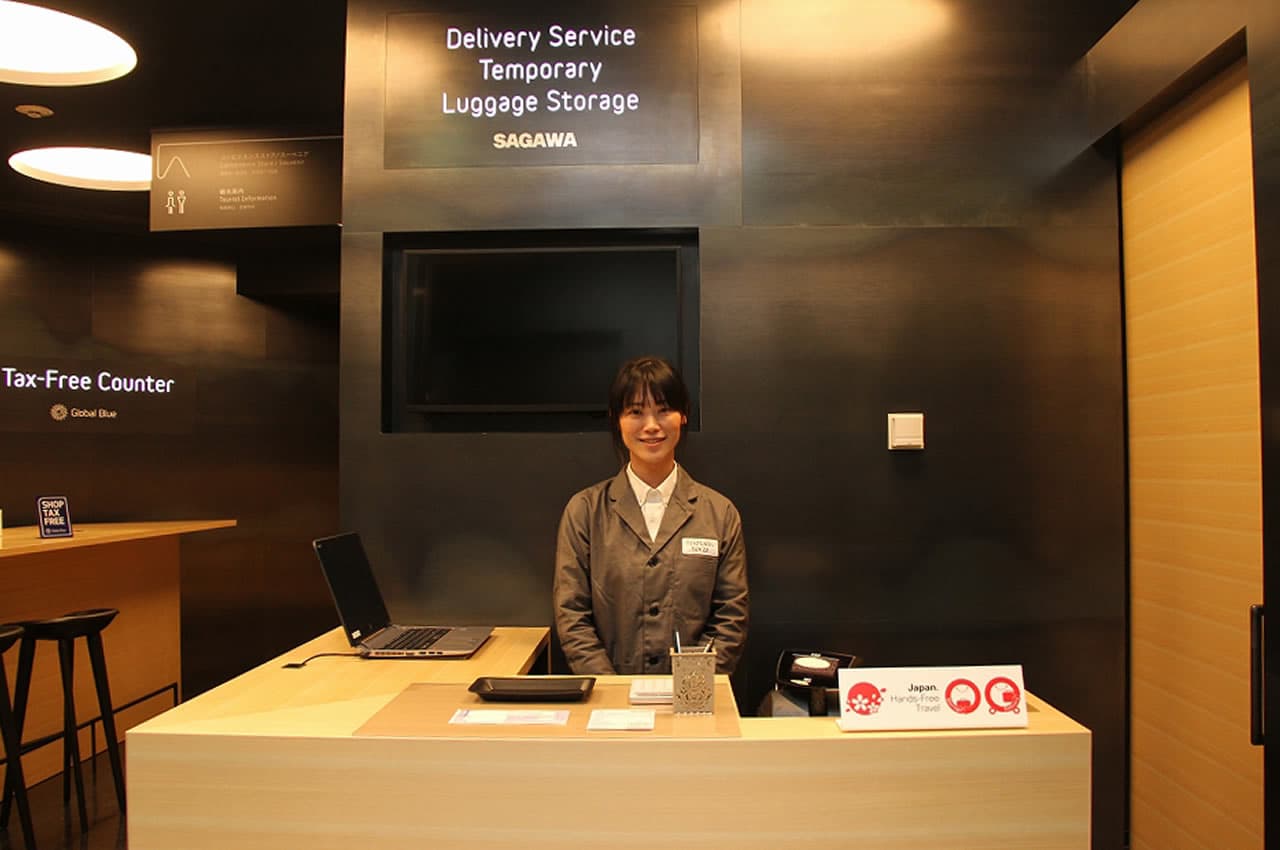
Some of our large commercial complexes with a facility logistics system
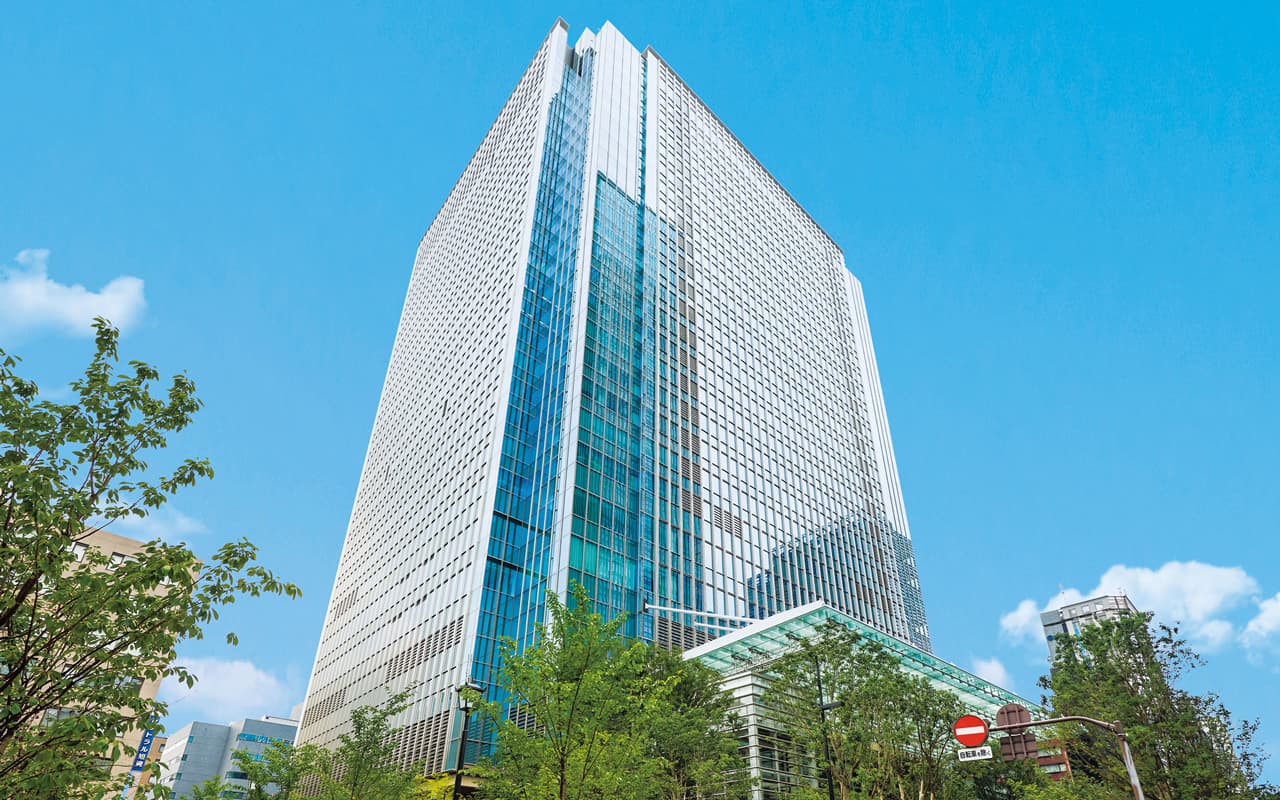
(Chuo-ku, Tokyo)
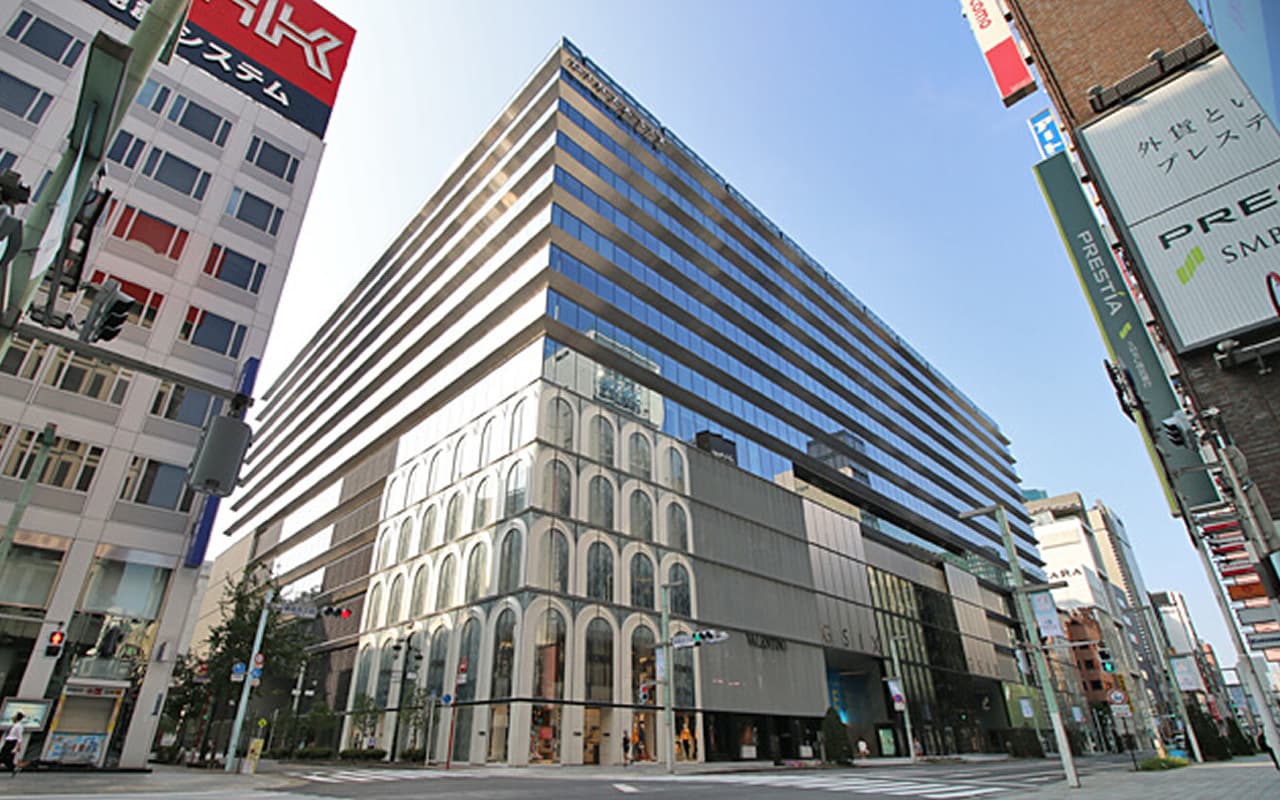
(Chuo-ku, Tokyo)
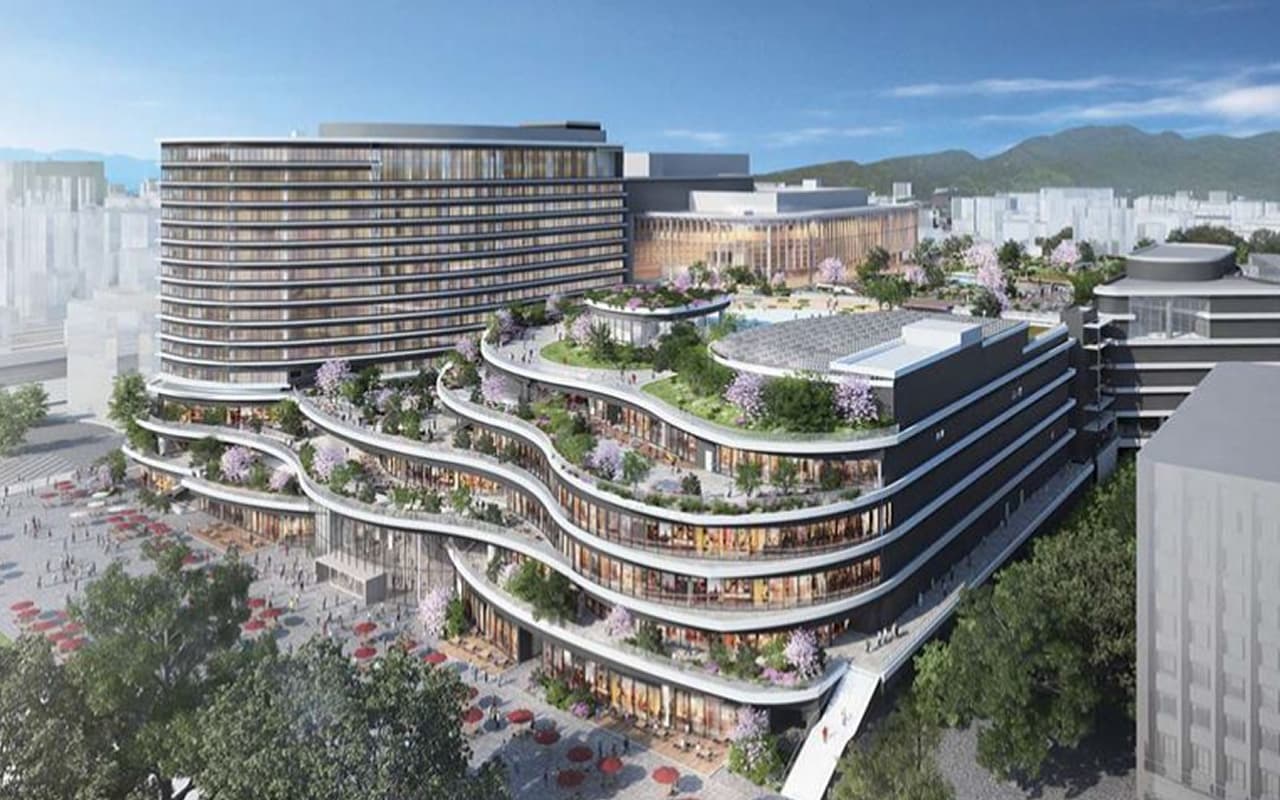
(Kumamoto City)
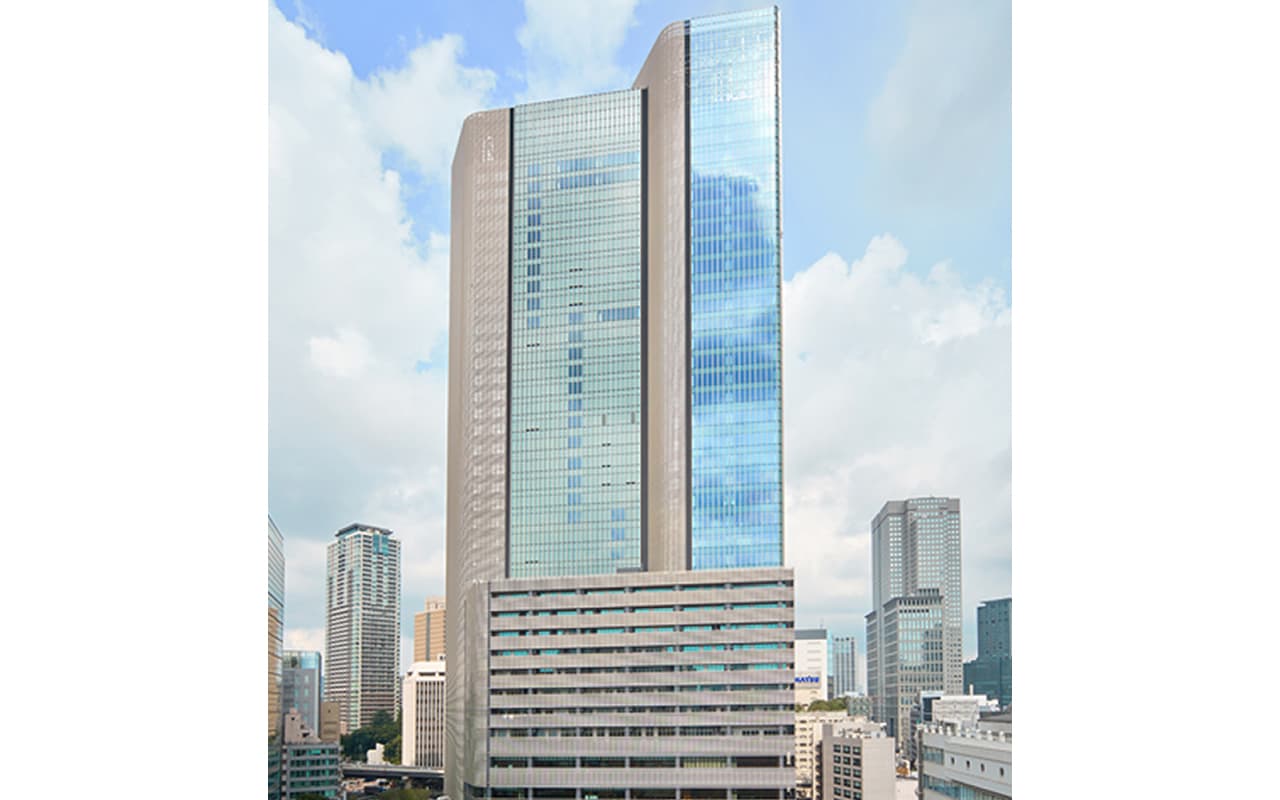
(Minato-ku, Tokyo)
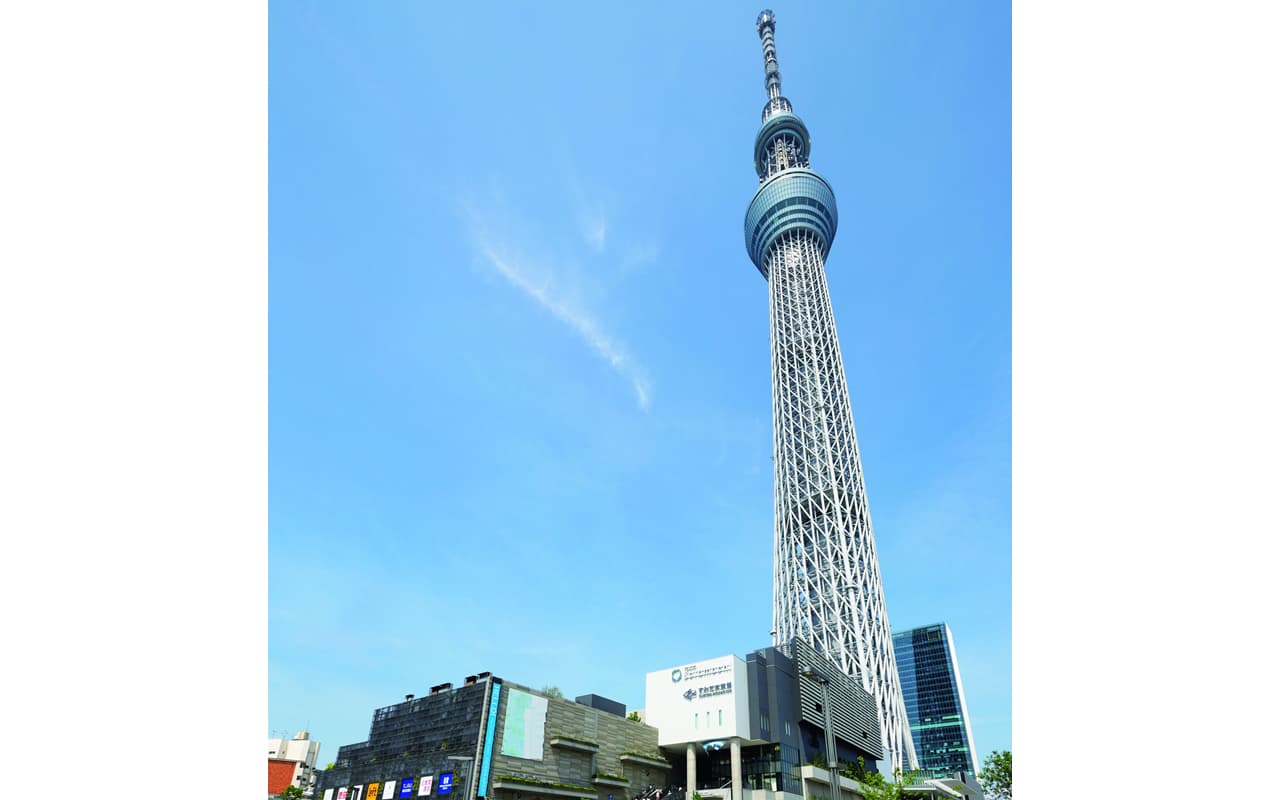
(Sumida-ku, Tokyo)
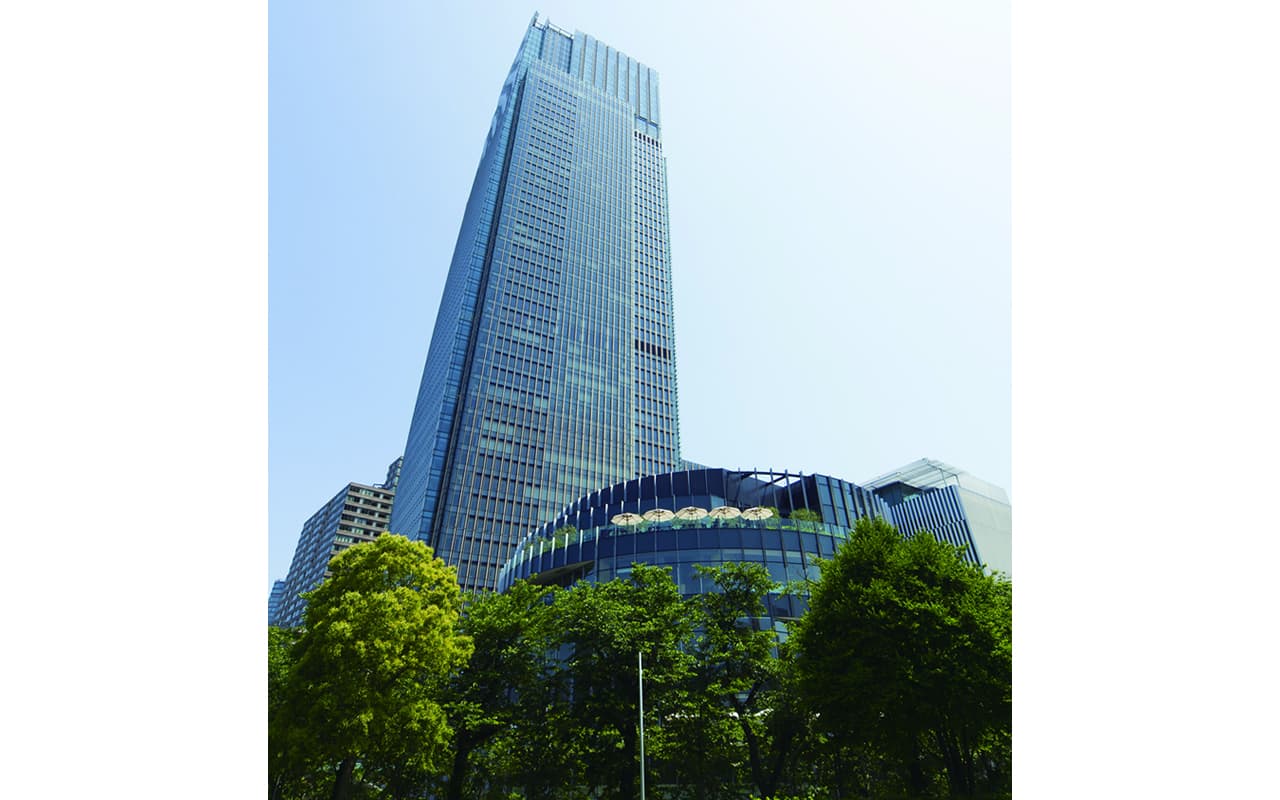
(Minato-ku, Tokyo)
We optimize the system for each facility based on conditions such as location, scale, and tenant makeup.
Smart Delivery
Solving various delivery issues with a made-to-order service
Smart Delivery is the industry's first custom-made delivery service that greatly improves work efficiency for customers after package delivery. We use time slot-specific delivery, including late night and early morning. Instead of delivering packages as they arrive, sorting codes are used to organize customer packages by product category, location, or other criteria, and then they are delivered in bundles. When combined with a delivery information service, Smart Delivery enables customers to not only to check the number of their packages in advance, but also request consolidated package delivery online. It is an environmentally friendly service that eliminates the need to sign for each package delivered and provides paperless delivery invoices.

Eco-Friendly Safe Driving
Promoting safety and environmental benefits using both devices and methods
Sudden acceleration and braking while driving not only increases the risk of traffic accidents, but also lowers fuel efficiency. Therefore, safe driving is also environmentally friendly driving. Sagawa Express provides thorough training to its drivers so that vehicles are always driven safely and in a way that reduces CO2 emissions.
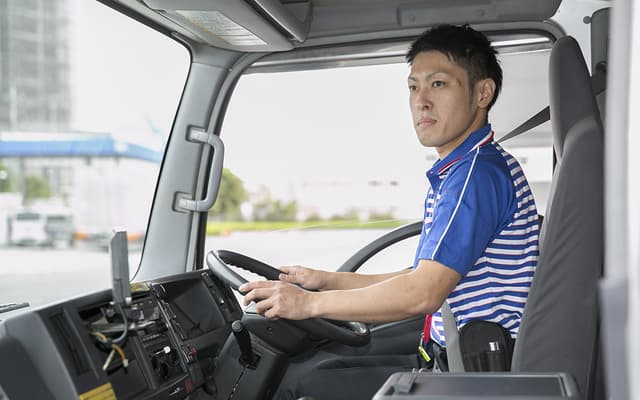

- Canceled in FY2020 and FY2022 due to the COVID-19 pandemic.
Seven Guidelines for Eco-Friendly Safe Driving
1. Implementation of "e-start" gentle acceleration
| Safety effects | Gentle starts create leeway enabling safety checks of the surroundings to be carried out without delay. Prevents accidents by enabling immediate stops in the event of an emergency. |
|---|---|
| Environmental effects | Gentle acceleration uses less fuel and can reduce carbon dioxide (CO2) emissions and black smoke. Sudden acceleration wastes fuel! |
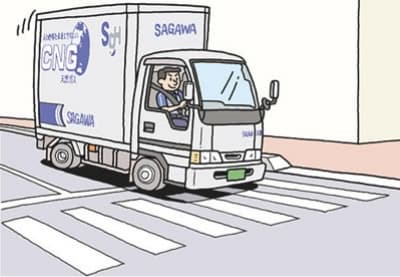
2. Shifting up gears early
| Safety effects | Shifting up gears early enables easy acceleration and maintains a safe speed and vehicle distance. |
|---|---|
| Environmental effects | Fuel consumption is minimized by shifting up early, also reducing carbon dioxide (CO2) emissions. High RPM in low gear produces noise and wastes fuel! |
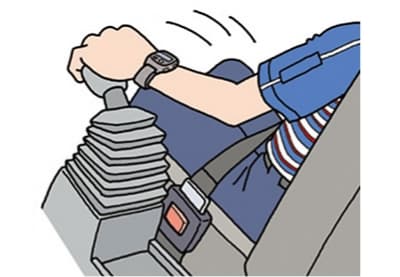
3. Driving at a fixed speed according to traffic conditions
| Safety effects | Driving at a fixed speed enables anticipation of one traffic light ahead and congestion. It broadens the scope of reliably performing safety checks and provides leeway. |
|---|---|
| Environmental effects | Keeping the accelerator at a fixed point consumes less fuel and reduces carbon dioxide (CO2) emissions. Undulating acceleration wastes fuel! |
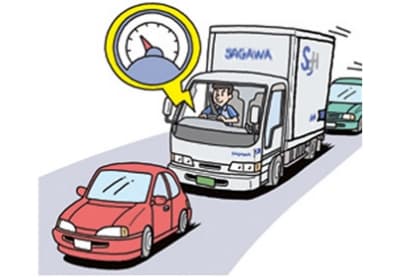
4. Securing adequate vehicle distance
| Safety effects | Having adequate vehicle distance reduces the danger of collisions. It prevents anxiety (stress) for the driver of the vehicle in front. |
|---|---|
| Environmental effects | It is possible to drive at a fixed speed by ensuring there is adequate distance to the vehicle in front, lowering fuel consumption and reducing carbon dioxide (CO2) emissions. |
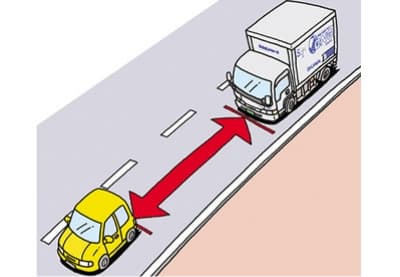
5. Utilization of engine brake by easing off the accelerator early
| Safety effects | In connection with driving at a fixed speed, driving by anticipating the behavior of the vehicles in front and road conditions enables defensive driving predicting hazards. |
|---|---|
| Environmental effects | Easing off the accelerator early when reducing speed completely cuts the fuel supply and can minimize fuel consumption. |
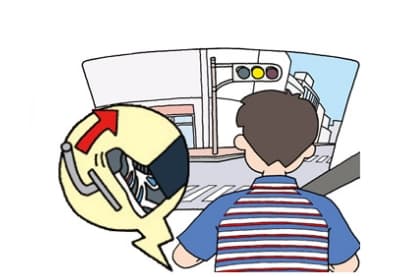
6. Encouraging removal of the key (stopping the engine) when parked
| Safety effects | Ensuring appropriate parking actions (gear lock and pulling the side brake twice) prevents accidents the vehicle from. It also has the effect of preventing vehicle theft. |
|---|---|
| Environmental effects | Not idling and turning off the air conditioner can also lower fuel consumption. (Do not use the air condition except when necessary!) |
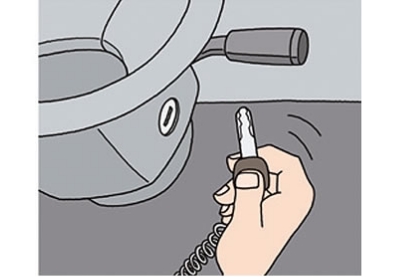
7. Daily inspections, maintenance and air pressure management
| Safety effects | Prevents traffic accidents caused by poor maintenance. Prevents unforeseen accidents and accidents caused by panicking when changing tires, etc. |
|---|---|
| Environmental effects | Inappropriate tire pressure increases rolling resistance and causes deterioration of fuel consumption. Air pressure management prevents uneven wear and prolongs the life of tires. |
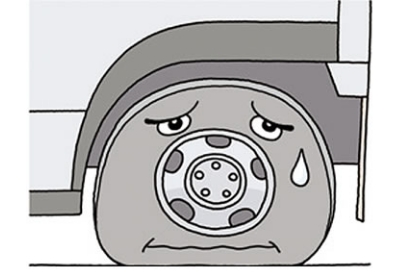
We are working to reduce traffic accidents and environmental impact by providing thorough driver training based on the Seven Guidelines for Eco-Friendly Safe Driving, a method that integrates eco-friendly and safe practices.
Environmentally Friendly Distribution Facilities
Installing solar power generation systems
Annual energy production equivalent to the daily energy consumption of approximately 51,000 typical households
To increase its use of renewable energy, Sagawa Express has installed solar power generation systems on the rooftops of 23 sales offices since fiscal 2003. The entire SG Holdings Group is also working to adopt renewable energy on an even larger scale. SG Realty Higashiosaka, which is home to Sagawa Express’ Higashiosaka Sales Office, uses a self-consumption power generation system and makes up the deficit with purchased renewable energy. In this way, the facility has achieved zero CO2 emissions.
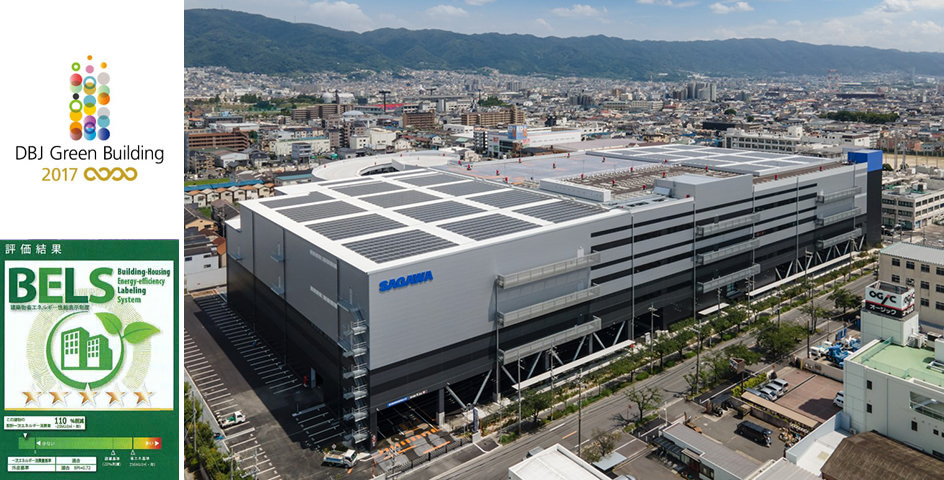
LED Lighting
Installed at 386 sales offices and large distribution facilities
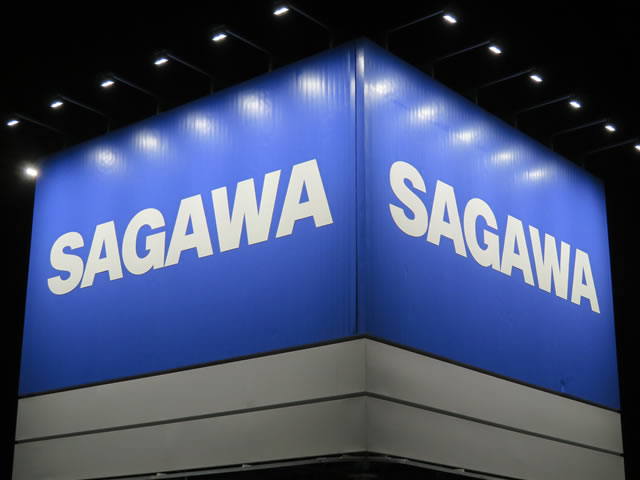
We are working to reduce our environmental impact by installing LED lighting at 386 sales offices and large distribution facilities.
The LED lighting installed by the end of fiscal 2022 has resulted in a CO2 emissions reduction of about 16,000 tons of CO2, which is a savings of about 32 million kilowatts of electricity.
